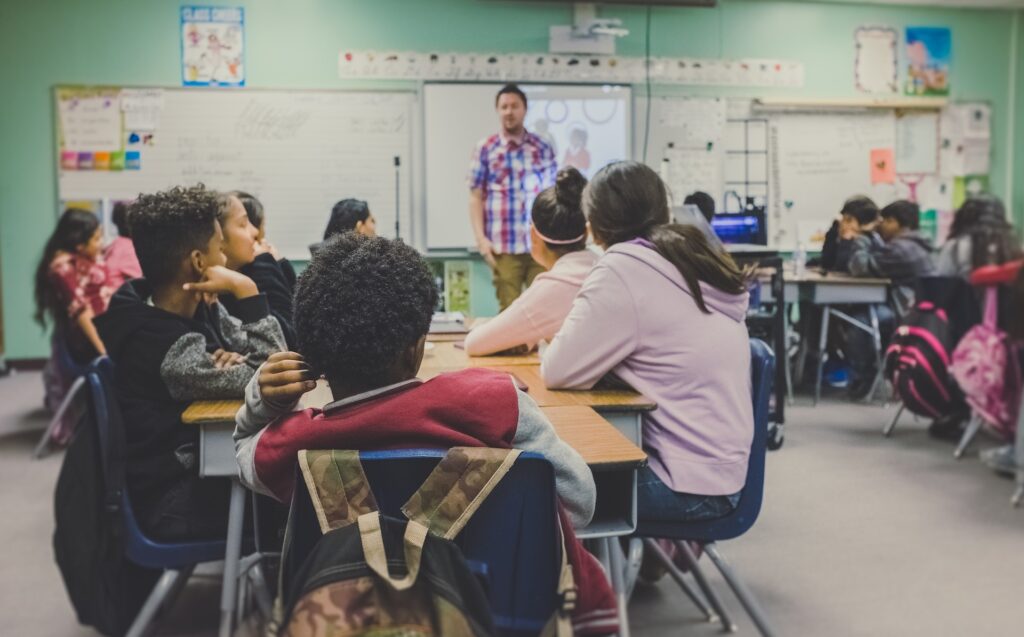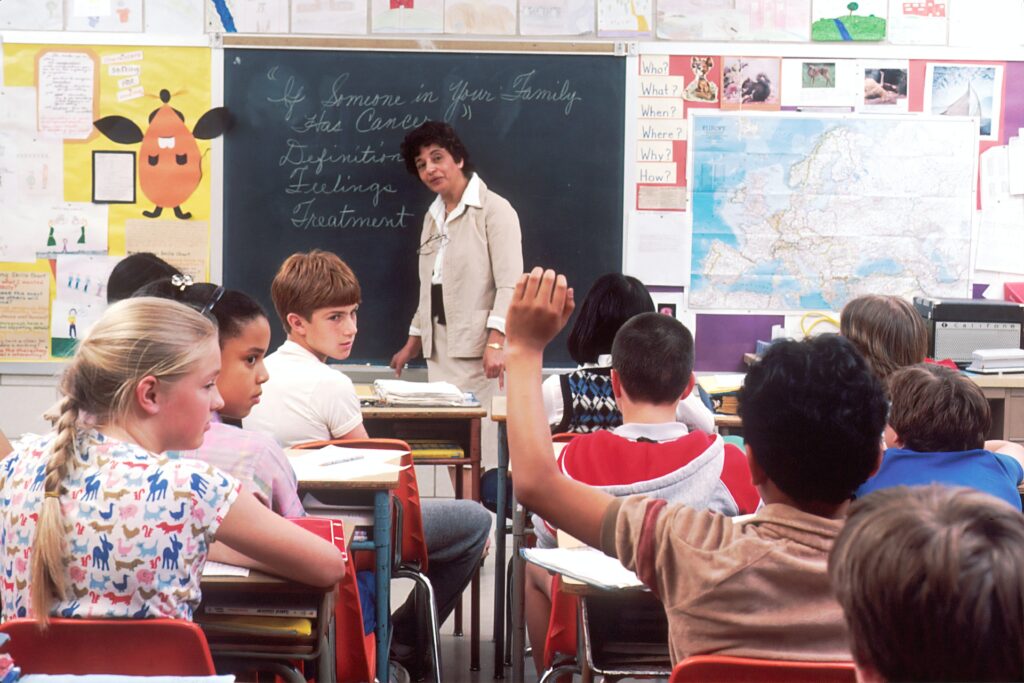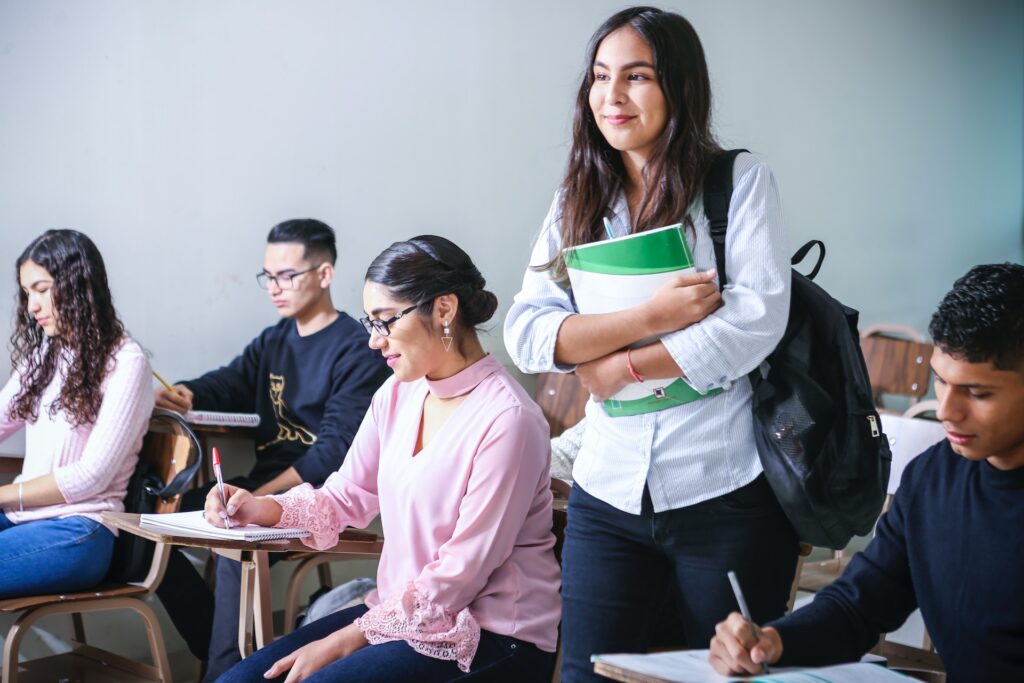Positive discipline is like a magic wand that creates a harmonious and productive learning environment. It is based on a philosophy that emphasizes mutual respect, firmness, and kindness. This concept is rooted in the belief that discipline should be instructive rather than punitive. Positive discipline teaches self-control and empathy by concentrating on solutions and proper conduct. It is a proactive approach that aims to prevent misbehavior rather than reactively address it.
Employing strategies that promote mutual respect, cooperation, and empathy not only helps in maintaining order but also fosters a love for learning among students. Let’s look at the concept of positive discipline, explore its benefits, and provide practical strategies for its implementation.
Definition of Positive Discipline in the Classroom
Positive discipline can be defined as an approach to classroom management that encourages cooperation, respect, and responsibility. It involves setting clear expectations, establishing consistent routines, and utilizing strategies that promote intrinsic motivation and positive behavior. Positive discipline is not permissive or lenient; rather, it provides structure and guidance while nurturing students’ social and emotional development.
Importance of Positive Discipline in the Classroom
Positive discipline is very important in the classroom setting. It provides a nurturing and supportive atmosphere where students feel valued and empowered. Unlike punitive measures, positive discipline in the classroom focuses on teaching rather than punishing, helping students develop self-discipline and essential life skills.
Benefits of Positive Discipline in the Classroom
This concept cultivates a sense of belonging and safety among students, promoting their emotional well-being. Students do better when they feel safe and engaged in learning. Research has indicated that positive discipline practices positively influence student motivation, attentiveness, and overall self-control. And this strategy is usually more impactful when adopted early.
Principles of Positive Discipline
The principles of positive discipline guide educators in creating an optimal learning environment. These principles include:
- Respect and empathy: Treating students with respect and empathy lays the foundation for positive relationships and effective discipline.
- Firmness and kindness: Balancing firmness and kindness allows educators to set clear boundaries while maintaining a supportive and caring atmosphere.
- Teaching and modeling: Educators play a crucial role in teaching appropriate behavior and modeling positive values and attitudes.
- Encouraging self-discipline: Positive discipline aims to develop students’ self-discipline by fostering autonomy, responsibility, and problem-solving skills.
Implementing Positive Discipline in the Classroom

To implement positive discipline effectively, educators can follow a series of practical strategies.
1. Creating a Positive Classroom Environment
Establishing a positive classroom environment involves creating a welcoming and inclusive space where students feel valued and respected. This can be achieved through colorful and engaging displays, flexible seating arrangements, and collaborative learning opportunities. Fostering a sense of belonging encourages healthy conduct and classroom participation.
2. Establishing Clear Expectations
Clear expectations are the cornerstone of positive discipline in the classroom. Educators should communicate their expectations regarding behavior, academic performance, and classroom procedures right from the start. This helps students understand what is expected of them and is more likely to help them meet those expectations.
3. Using Positive Reinforcement
Positive reinforcement is a powerful tool for promoting positive behavior in the classroom. It involves acknowledging and rewarding students’ efforts and achievements, both big and small. Verbal praise, certificates, or small incentives can go a long way in motivating students and reinforcing desired behavior.
4. Effective Communication and Active Listening
Effective communication and active listening are essential components of positive discipline. Educators should establish open lines of communication with students, allowing them to express their thoughts, concerns, and ideas. Active listening helps educators demonstrate empathy and build trust. This enables students address issues promptly and collaboratively, fostering a sense of belonging and understanding.
Strategies for Positive Discipline in the Classroom
Positive discipline encompasses both proactive and reactive strategies to address student behavior effectively.
1. Proactive Strategies
Proactive strategies involve setting up the classroom environment and implementing routines that prevent misbehavior. These include establishing clear rules, providing engaging and relevant lessons, incorporating movement breaks, and offering choices to promote autonomy. Proactive teachers can minimize disruptions and promote a good learning environment.
2. Reactive Strategies
Despite proactive measures, occasional misbehavior may still arise. Reactive strategies are employed to address such instances. These include using logical consequences, time-outs, or reflective thinking exercises. Remember that reactive strategies should be used sparingly and in a manner that focuses on teaching and resolving conflicts rather than shaming or punishing.
3. Teaching Problem-Solving Skills
One of the aims of positive discipline in the classroom is to equip students with problem-solving skills. Educators can facilitate this by teaching conflict resolution techniques, encouraging brainstorming sessions, and guiding students to analyze situations from multiple perspectives. Nurturing problem-solving abilities helps students develop critical thinking skills and learn to navigate challenges effectively.
4. Encouraging Empathy and Understanding
Empathy and understanding play a vital role in fostering positive relationships and reducing conflicts. Educators can encourage empathy by incorporating activities that promote perspective-taking, cooperative learning, and community service.
Addressing Challenges and Difficult Behaviors
Implementing positive discipline may come with challenges, but there are effective solutions to overcome them.
1. Dealing with Difficult Behaviors
Some students may exhibit challenging behaviors that require additional support. Educators can address such behaviors by implementing individualized behavior plans, collaborating with support staff, and seeking assistance from counselors or behavior specialists. Seeking for tailored interventions will help educators deal with individual student behaviors.
2. Addressing Individual Needs
Each student has unique needs and learning styles. To ensure positive discipline, teachers should be sensitive to individual differences and accommodate diverse learning preferences. Differentiated instruction, flexible seating, and individual goal-setting are strategies that can help address individual needs and promote inclusivity.
3. Involving Parents and Caregivers
Positive discipline extends beyond the classroom walls. Involving parents and caregivers in the discipline process enhances consistency and reinforces positive behavior. Educators can maintain open lines of communication, organize workshops, and provide resources to support parents in implementing positive discipline practices at home.
The Role of Teachers and Educators

Teachers and educators play a pivotal role in implementing positive discipline.
Modeling Positive Behavior
Teachers serve as role models for their students. By consistently modeling positive behavior, respect, and empathy, educators create a standard for students to follow. This includes demonstrating effective communication, problem-solving skills, and the use of positive reinforcement. When students witness positive behavior from their teachers, they are more likely to emulate it.
Continuous Professional Development
Continuous professional development is crucial for educators to enhance their skills and stay updated with the latest research and strategies related to positive discipline. Attending workshops, and conferences, and engaging in peer collaboration allows educators to refine their techniques and adapt to the changing needs of their students.
Collaborating with Colleagues
Collaboration among colleagues fosters a supportive and cohesive learning community. Teachers can strengthen their positive disciplinary methods by networking and exchanging ideas, materials, and strategies. Collaboration also enables educators address common challenges collectively and brainstorm innovative solutions.
Conclusion
Positive discipline in the classroom is a powerful approach that creates a nurturing, respectful, and engaging learning environment.
The idea is for teachers to create a supportive learning environment and equip their students with the tools they need to become responsible, empathetic, and self-disciplined.
We can achieve that by learning the principles of positive discipline, putting them into practice, and welcoming the opportunity for continuous growth.
Frequently Asked Questions
1. How long does it take to see the effects of positive discipline in the classroom?
The effects of positive discipline can vary depending on the students and the consistency of its implementation. However, educators often observe positive changes in student behavior within a few weeks or months of implementing positive discipline strategies.
2. Can positive discipline be used with students of all ages?
Yes, positive discipline can be adapted for students of all ages, from preschool to high school. The strategies and techniques may vary based on developmental stages and individual needs, but the core principles of respect, empathy, and teaching remain consistent.
3. Is positive discipline effective for students with challenging behaviors?
Yes, positive discipline can be particularly effective for students with challenging behaviors. By addressing the underlying causes of the behavior and providing support, positive discipline helps students develop alternative coping strategies and make positive choices.
4. Are there any situations where punitive measures may be necessary?
While the focus of positive discipline is on teaching and nurturing, there may be rare instances where punitive measures are necessary for the safety and well-being of all students. However, such measures should be used sparingly and in conjunction with efforts to teach and support positive behavior.
5. How can parents support positive discipline at home?
Parents can support positive discipline by establishing clear expectations, using positive reinforcement, and maintaining open lines of communication with their children. By collaborating with teachers and educators, parents can ensure consistency between the home and school environments, further reinforcing positive behavior.



